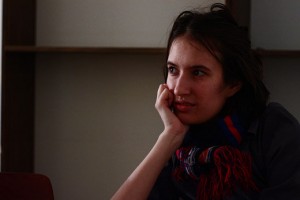
Allison Houseworth
In the hours before Barry Hessenius’ Dinner-Vention this past September, Devon Smith wrote a post in which she asked “What if an arts organization employed a user experience designer?” As defined by Wikipedia - the dictionary powered by community - User Experience Design is “any aspect of a person's interaction with a given system, including the interface, graphics, industrial design, physical interaction, and the manual.” Apple is the best example of a company that excels in the area of UX design. Everything they create is based on user experience - your iPhone, its packaging, the stores themselves. But how do arts organizations embrace the user experience?
For the last four years, I have taught a course called “Audience Engagement: In Line and Online” to MFA Theatre Management and Producing students at Columbia University. (You can follow us on Twitter at #AlliClass.) Each semester we discuss “Service Mapping,” which is identifying each touchpoint the audience member has with your organization from the moment they decide to go to the theatre to the moment they get home. We start with exposure, move on to research, purchase, and include moments like entering the venue, exiting the venue, pre- and post-show activities. Traditional tech-world UX designers - and often arts marketers! - will focus often on the two stages of service mapping we call “research” and “purchase.” This is where we analyze how easy is it for your customer to find what what’s playing, when, where, and how to buy tickets. Where I see arts marketers - and yes, arts fundraisers, producers and programmers too - really struggle is when we bring the audience into our home - “entering the venue,” “getting to your seats,” “intermission.” Once the audience gets in the door your job is not done. Your audience is, in perhaps not the kindest of terms, held captive. They are, more positively, your captive audience. So what are you going to do with them?
Read More








 Jessyca Holland
Jessyca Holland

 Brianne Logan
Brianne Logan





